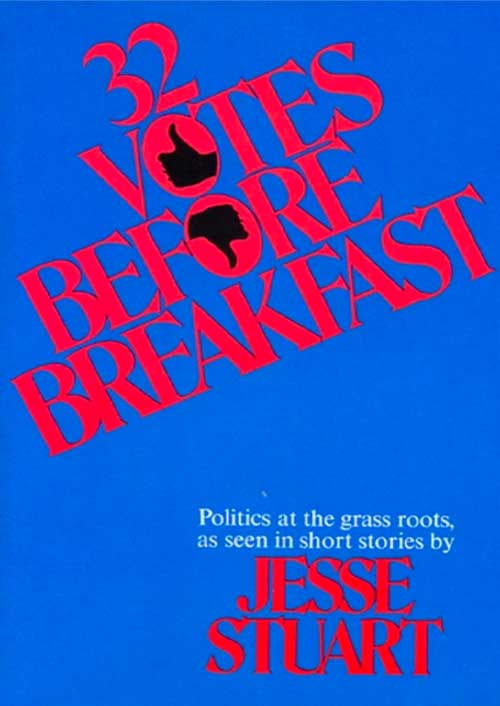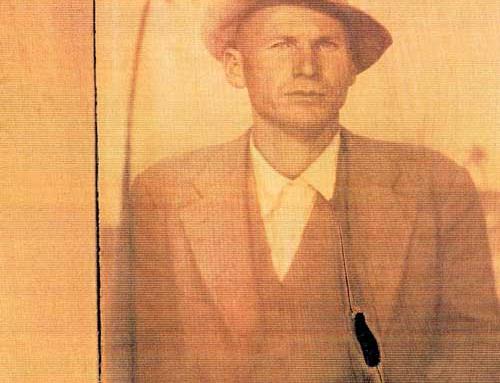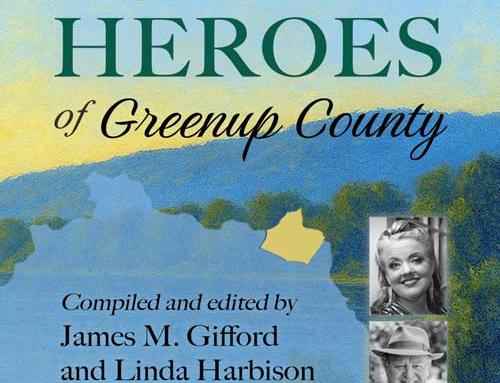In his short stories, the late author Jesse Stuart (1906-1984) reshaped W-Hollow into a fictional place that became part of the American imagination. His stories helped to define the Appalachian world for generations of American readers, beginning in the late 1930s and continuing to today.
Stuart’s fictional world – like his real world – was the hills, hollows, and small farms of northeastern Kentucky. Readers entered an outdoor world of dark hills in the winter, flowering hills in the spring, and beautiful multi-colored hills in the fall. The land is more like the nineteenth century than the emerging industrial world that was Stuart’s birthright. It was inhabited by Scotch-Irish or English people with old fashioned names like Uglybird Skinner, Battle Keaton, and Subrinia Boone.
 They were people whose lives were defined by strong family loyalty that sometimes led to violent feuds. The people of Stuart’s fictional world eked out a living from poor soil that yielded meager returns. Their difficult lives were steeped in superstition and simple pleasures like the “sampling of herbs,” fox hunting, courtships, and a few hangings where dying men cursed, women fainted, and heavily armed sheriffs and deputies kept law and order. Stuart’s fictional world was an interesting addition to the literary geography of America, and it was made nationally popular in more than 460 published short stories.
They were people whose lives were defined by strong family loyalty that sometimes led to violent feuds. The people of Stuart’s fictional world eked out a living from poor soil that yielded meager returns. Their difficult lives were steeped in superstition and simple pleasures like the “sampling of herbs,” fox hunting, courtships, and a few hangings where dying men cursed, women fainted, and heavily armed sheriffs and deputies kept law and order. Stuart’s fictional world was an interesting addition to the literary geography of America, and it was made nationally popular in more than 460 published short stories.
Jesse Stuart’s fiction often focuses on the essential goodness of humanity. He depicts a simple world where people exist the best they can. He focuses on the positive and life-enriching qualities of laughter, joy, respect, kindness, and love.
There are many important themes in these stories, including the destructive power of nature, the joy of love, and the debilitating effects of war. Even sad stories seem to have a message about finding joy in life. Stuart obviously believes that laughter is one of life’s best qualities and that we often don’t laugh enough.
Family life in these stories evidences joy and happiness, too. ne of the most endearing qualities of these stories is Stuart’s descriptions of the interactions among generations of families. Stuart is a master at depicting characters of all ages and their close relationships with one another.
Significantly, Stuart’s fictional characters talk to each other and share stories, something that seems to be fast disappearing, if not entirely gone, in our contemporary world. The tall tales, jokes, and stories passed from one generation to another enrich their lives. The older generations don’t neglect or ignore their children and grandchildren, and the stories they tell have a tremendous influence on the world views and lives of their families.
It has been almost ninety years now since Stuart published his first collection of stories, and Appalachia has changed greatly. Readers of these stories will glimpse a rural, isolated world that has now almost completely disappeared from the American landscape. Included among Stuart’s 65 published books are nineteen short story collections.
Several of Stuart’s short story collections are still in print, and I particularly recommend “32 Votes Before Breakfast” and “Come Gentle Spring” to adult readers who wish to put today’s problems aside for a short while and return to the happier and simpler days reflected in Jesse Stuart’s fiction.
For more information or to make a purchase, call 606-326-1667 or email jsf@jsfbooks.com.
By James M. Gifford
JSF CEO & Senior Editor
In his short stories, the late author Jesse Stuart (1906-1984) reshaped W-Hollow into a fictional place that became part of the American imagination. His stories helped to define the Appalachian world for generations of American readers, beginning in the late 1930s and continuing to today.
Stuart’s fictional world – like his real world – was the hills, hollows, and small farms of northeastern Kentucky. Readers entered an outdoor world of dark hills in the winter, flowering hills in the spring, and beautiful multi-colored hills in the fall. The land is more like the nineteenth century than the emerging industrial world that was Stuart’s birthright. It was inhabited by Scotch-Irish or English people with old fashioned names like Uglybird Skinner, Battle Keaton, and Subrinia Boone.

They were people whose lives were defined by strong family loyalty that sometimes led to violent feuds. The people of Stuart’s fictional world eked out a living from poor soil that yielded meager returns. Their difficult lives were steeped in superstition and simple pleasures like the “sampling of herbs,” fox hunting, courtships, and a few hangings where dying men cursed, women fainted, and heavily armed sheriffs and deputies kept law and order. Stuart’s fictional world was an interesting addition to the literary geography of America, and it was made nationally popular in more than 460 published short stories.
Jesse Stuart’s fiction often focuses on the essential goodness of humanity. He depicts a simple world where people exist the best they can. He focuses on the positive and life-enriching qualities of laughter, joy, respect, kindness, and love.
There are many important themes in these stories, including the destructive power of nature, the joy of love, and the debilitating effects of war. Even sad stories seem to have a message about finding joy in life. Stuart obviously believes that laughter is one of life’s best qualities and that we often don’t laugh enough.
Family life in these stories evidences joy and happiness, too. ne of the most endearing qualities of these stories is Stuart’s descriptions of the interactions among generations of families. Stuart is a master at depicting characters of all ages and their close relationships with one another.
Significantly, Stuart’s fictional characters talk to each other and share stories, something that seems to be fast disappearing, if not entirely gone, in our contemporary world. The tall tales, jokes, and stories passed from one generation to another enrich their lives. The older generations don’t neglect or ignore their children and grandchildren, and the stories they tell have a tremendous influence on the world views and lives of their families.
It has been almost ninety years now since Stuart published his first collection of stories, and Appalachia has changed greatly. Readers of these stories will glimpse a rural, isolated world that has now almost completely disappeared from the American landscape. Included among Stuart’s 65 published books are nineteen short story collections.
Several of Stuart’s short story collections are still in print, and I particularly recommend “32 Votes Before Breakfast” and “Come Gentle Spring” to adult readers who wish to put today’s problems aside for a short while and return to the happier and simpler days reflected in Jesse Stuart’s fiction.
For more information or to make a purchase, call 606-326-1667 or email jsf@jsfbooks.com.
By James M. Gifford
JSF CEO & Senior Editor




